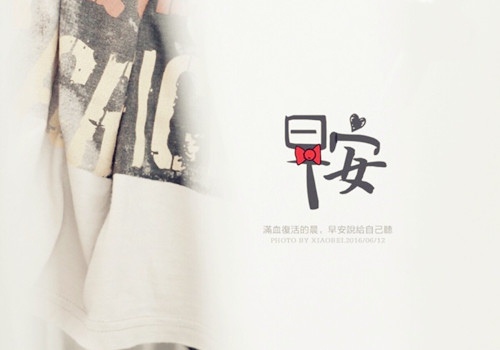
众所周知,功夫熊猫2所示最近,很快成为中国的热门话题。令人惊讶的是,这家美国电影显示了明亮的中国影像例如功夫和熊猫。这是文化的全球化的一个很好的例子。但有两个完全不同的对待它的态度。有些人认为它表明了中国文化的的.影响越来越大。然而,其他人倾向于采取了相反的观点,并把它作为本土文化资源的入侵。至于我,我倾向于采取开放的态度,对文化的全球化。我们可以促进我们自己的文化,同时学习其他文化形式,这是对所有国家有利。最后,重要的是要注意,每一种文化都有其自身的特点。随着文化的全球化趋势不断发展,我们应该为我们国家的传统文化的发展和蔓延负责。
我的看法:在学好本土文化的前提下去学习其他国家的文化对民族文化的发展是十分有益的,学习他人的文化固然可取,但要尊重他人的名族文化形式,尽可能的保留其特点,我们要在中国文化全球化的基础上保护好中国文化最本质的东西,我们要对中国的民族文化的传承与发展负责。
my view of culture globalization
as is known to all, kung fu panda 2 was shown recently and soon became a hot topic in china. surprisingly, this american film shows bright chinese images such as kungfu and panda. this is a good example of culture globalization. but there are two entirely different attitudes towards it. some people think it demonstrates the increasing influence of chinese culture. others, however, incline to take the opposite point of view and regard it as an invasion of native culture resources. as for me, i tend to take an open attitude towards culture globalization. we can promote our own culture and meanwhile learn form other cultures, which is beneficial to all countries. finally, it is important to note that each culture has its own characteristics. with the evolving trend of culture globalization, we should be responsible for the development and spread of our national culture tradition.
中华文化英语演讲稿1
The practice of drinking and serving tea has been part of Chinas cultural identity for centuries. China used to be the worlds sole provider of tea. Today, tea is the worlds most widely consumed beverage after water, and famous Chinese teas are still highly prized.
Tea experts estimate that top-quality Longjing will sell for 40,000 to 50,000 yuan per 500 grams this year, about 25 percent higher than last year. The price of common Longjing will be around 4,000 yuan per 500 grams this year.
Though quality tea is highly pursued at home, it seems that it has not secured a strong position in the global market.
Li Shiwei is the board chairman of Tianfu Group, a flagship tea enterprise based in Fujian Province, a major production region of oolong tea in China. He says a major problem for todays private tea enterprises is that they do not have enough money to operate on a large scale, let alone undertake promotions overseas.
"Most of Chinas tea enterprises are non-state-owned with lack of funding being their weakest point. We are glad to see that Minsheng Bank is now offering a special loan program for tea enterprises. We hope more banks in China will give us more support in terms of financing."
Li Jiaxun, board chairman of Zhejiang Tea Group, Chinas largest exporter of green tea, says a lack of widely recognized brand names is holding Chinese tea exports back and squeezing the industrys profit margin.
Li cites his own company as an example. The group mainly sells tea as a raw material rather than a branded product. As a result, its profit margin is only about 5 percent, and sometimes even lower.
The tea expert adds that Chinese companies should also adapt to the needs of western customers, who might prefer black tea to green, and teabags to loose-leaf teas.
Wen Zhongliang, deputy director of the Foreign Trade Department under the Ministry of Commerce, says it is an urgent task for Chinese tea producers and sellers to build up the image of Chinese tea abroad to boost tea exports.
"In addition to ensuring the high quality of Chinese tea, tea enterprises in the country should promote the image of Chinese tea together. It could be something of an effort to explain the cultural significance and health benefits of tea to foreigners, but once they realize that, they will find it fascinating."
The trade official suggests that existing networks such as the Confucius Institutes be used to spread Chinas tea culture around the world.
For CRI, this is Su Yi.
中华文化英语演讲稿2
The Chinese people, in their drinking of tea, place much significance on the act of "savoring." "Savoring tea" is not only a way to discern good tea from mediocre tea, but also how people take delight in their reverie and in tea-drinking itself. Snatching a bit of leisure from a busy schedule, making a kettle of strong tea, securing a serene space, and serving and drinking tea by yourself can help banish fatigue and frustration, improve your thinking ability and inspire you with enthusiasm.
You may also imbibe it slowly in small sips to appreciate the subtle allure of tea-drinking, until your spirits soar up and up into a sublime aesthetic realm. Buildings, gardens, ornaments and tea sets are the elements that form the ambience for savoring tea. A tranquil, refreshing, comfortable and neat locale is certainly desirable for drinking tea. Chinese gardens are well known in the world and beautiful Chinese landscapes are too numerous to count. Teahouses tucked away in gardens and nestled beside the natural beauty of mountains and rivers are enchanting places of repose for people to rest and recreate themselves.
China is a country with a time-honored civilization and a land of ceremony and decorum. Whenever guests visit, it is necessary to make and serve tea to them. Before serving tea, you may ask them for their preferences as to what kind of tea they fancy and serve them the tea in the most appropriate teacups. In the course of serving tea, the host should take careful note of how much water is remaining in the cups and in the kettle. Usually, if the tea is made in a teacup, boiling water should be added after half of the cup has been consumed; and thus the cup is kept filled so that the tea retains the same bouquet and remains pleasantly warm throughout the entire course of tea-drinking. Snacks, sweets and other dishes may be served at tea time to complement the fragrance of the tea and to allay ones hunger.
中华节日篇
1、端午节:Dragon Boat Festival
2、清明节:Qingming Festival
3、春节:Spring Festival
4、除夕:New Year's Eve
5、七夕节:Double Seventh Festival
6、中秋节:Mid-Autumn Festival
7、重阳节:Double-Ninth Festival
8、元宵节:Lantern Festival
中华美食篇
1、北京烤鸭:Bejing roast duck
2、豆浆:soybean milk
3、馒头:mantou/steamed bun
4、火锅:hot pot
5、包子:baozi/steamed stuffed dun
6、叉烧包:steamed bun with roast pork
7、麻花:fried dough twist
8、粽子:zongzi/rice dumpling
9、拉面:stretched noodles
10、馄饨:wonton/dumpling in soup
11、豆腐:tofu/bean curd
古典文学篇
1、《史记》:Historical Records
2、《诗经》:The Book of songs
3、《春秋》:The Spring and Autumn Annals
4、《论语》:The Analects of Confuclus
5、《三国演义》:The Romance of the Three Kingdom
6、《水浒传》:Water Margin
7、《西游记》:Pilgrimage to the west/Journey to the West
8、《红楼梦》:A Dream in Red
9、《山海经》:The Classic of Moutains and Rivers
10、《三字经》:Three-Character
11、《资治通鉴》:History as Mirror
名胜古迹篇
1、长城:The Great Wall
2、秦始皇陵:The Mausoleum of Emperpor Qinshihuang
3、兵马俑:Terra-cotta Warriors
4、敦煌莫高窟:Mo Kao Grotto at Dunhuang
5、鼓楼:drum tower
5、故宫:The Forbidden City/The Imperial Palace
6、天坛:Temper of Heaven
7、西湖:West Lake
8、日月潭:Sun-Moon Lake
9、明十三陵:The Ming Tombs
10、苏州园林:Suzhou Gardens
传统艺术篇
1、京剧:Peking opera
2、皮影戏:shadow play
3、太极:Tai Chi
4、对口相声:witty dialogue
5、杂技:acrobatic performance
6、中国武术:Chinese martial arts/Kung Fu
7、越剧:Yue opera
8、古筝:Chinese zither
9、二胡:erhu
10:旗袍:cheongsam



